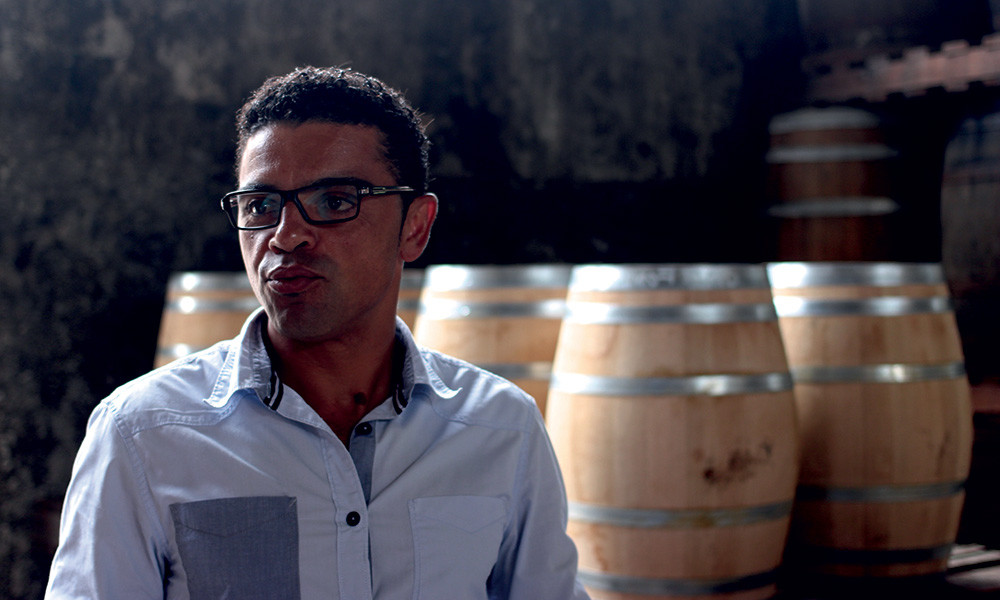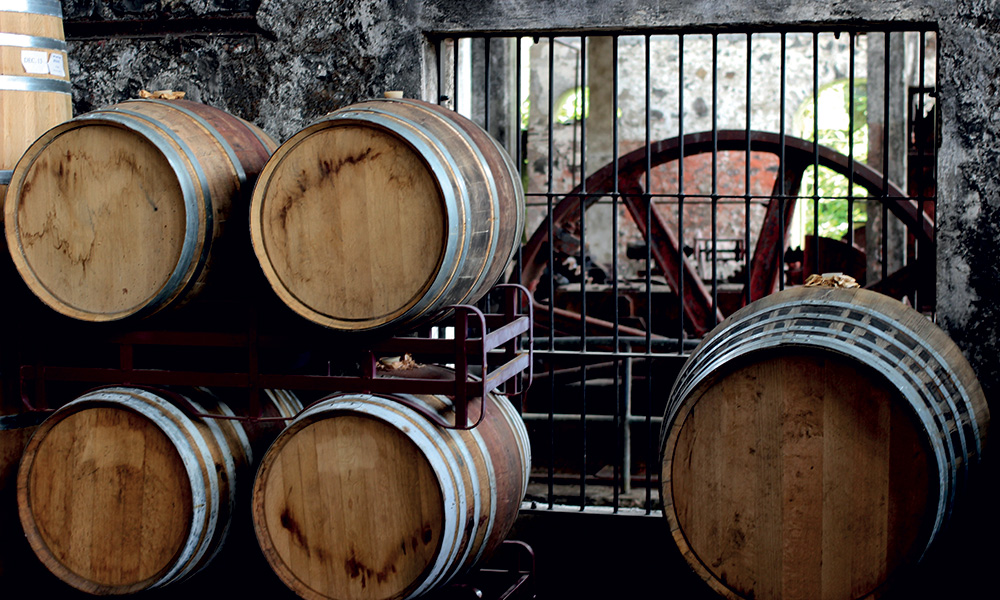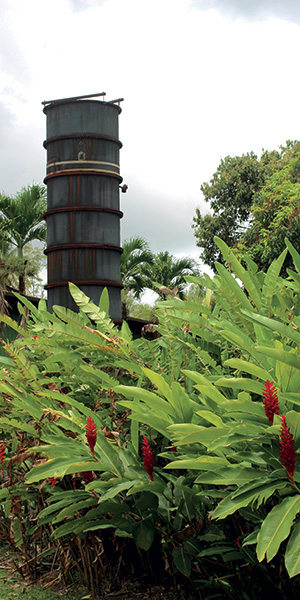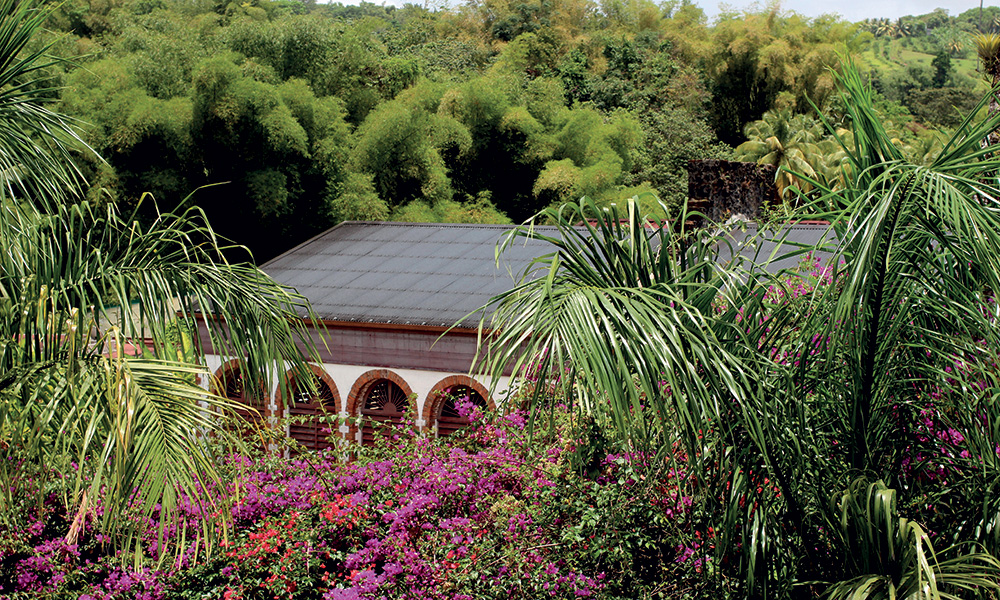Cyrille Lawson has been the Commercial Director for HSE rums for 20 years and has accompanied this emblematic brand through its journey for registered designation of origin, becoming one of its formidable ambassadors. However, he has never been content to remain just the keeper of the flame but has also dedicated himself to making a global success of an innovative spirit, unique to the Antilles and the rhum world, for both white rhums and aged rhums. It is an approach that has led a number of producers to follow in his footsteps and, so to speak, to once again revolutionise the world of rhum!

Rumporter: How did you begin your career in rhum?
Cyrille Lawson: Coming from an agricultural background (my grandfather was a wine producer), I was destined to move into the agricultural commodities industry, wine or spirits. I came to be in Martinique for a meeting with José and Florette Hayot in 1996 during a personal holiday. Very quickly, our exchanges concerning the ambitious project of taking over the Saint-Etienne estate impassioned me, making me want to play a part in this adventure. Since then, I’ve been working for HSE rhums for 20 years and my passion for this brand, this production and this terroir is just as strong.
R: What place does HSE hold in the history of Martinique rhum?
CL: Saint-Etienne is an emblematic brand of Martinique. The name was registered in 1882. Here, sugarcane and sugar refinery rhum were produced, just as they were everywhere in Martinique at that time. Then, as time passed and sugar production evolved, Saint-Etienne started gradually moving towards agricultural rhum, “pure juice”. The distillery would successively belong to the Aubery, Simmonet and Dormoy families before being bought by José and Florette Hayot in 1995. Saint-Etienne was the leading brand in Martinique from the 1950s up until 1970. At the beginning of the 1980s, the occurrence of cyclones David and Allen caused the slow decline of the estate which closed shop in 1988.

R: How has the brand developped over the last 20 years?
CL: Since being purchased in 1995, an ambitious site renovation project has been under way. Restoring industrial facilities, transferring the Saint-Etienne distilling columns to the Simon distillery (owned by Yves and José Hayot), restoring the buildings and creating a construction programme for the aging cellars…Saint-Etienne has seen a considerable transformation in the last 20 years. At the same time, it has re-established its place in the market as a favourite amongst Martinique locals (3rd most popular local brand). There was then a second phase concerning branding and strong biases regarding production were formed. The use of barrels with diverse provenances as well as the production of the first vintage white rums began. The brand calls itself HSE, to symbolise this rebirth and as a projection towards the sort of future we are hoping for under the guiding principals of quality, diversity and discovery.
R: What makes the HSE brand unique?
CL: HSE is one of the most innovative brands of rhum in terms of Rhums Agricoles. In white rhums, as well as “classic” rhums, we select white vintage rhums, which are distilled and then rested over at least 2 years (vintages from 2000, 2007, 2010 and 2012). We started from the observation that there was a relatively large variety within white rhums depending on the year and time of harvest. We also understand the impact of the maturation time on the bouquet’s aromatic expression. The idea was therefore to select a white rhum every time the year appeared to be uniquely expressive and to employ a slow and gradual maturation to the selected product. Distilled and then rested over at least 2 years, the white rhum vintages selected offer increased complexity and full aromatic expression. As it happens, the first cuvée produced in this way, the 2000 vintage, possessed notes of white flowers of rare elegance. In terms of vieux rhums, based on a partnership of several years with coopers, wine and spirit producers, we have a variety of large casks at our disposal that allow us to offer unique, distinct vieux rhums to this day.
R: Where does the sugarcane come from which is used for HSE rhums?
CL: 60 to 70% of our sugarcane is cultivated by family-owned agricultural companies. They are located from the north to the south of Martinique, mainly on the Atlantic side. The rest of our supply is provided by small independent planters with whom we have historically worked.

R: How do you keep up your demanding level innovation?
CL: Creation of new products is anchored in our brand philosophy. It has been the cornerstone of HSE’s renovation since it was purchased in 1995. This “original” dimension is shared amongst all of the components of the enterprise, shareholders and all HSE collaborators. You could sum up our brand values like this: “distil the origin and open up the field of possibilities”. This starts with the AOC, which regulates our production process and supervises our specifications, and from there work towards providing rich and varied directions and taste experiences. We have a very talented production team led by Sébastien Dormoy, Director of Production, and Lionel Lampin, Cellar Master, who work in the development of our new products. We have an empiric approach based on the product as a means of serving our philosophy. We are always trying to refine our aims and create new hallmarks if, and only if, the product truly adds something to the existing range.
R: What is the classic approach to the aging of HSE rhums?
CL: Without betraying our production secrets, you could perhaps talk about the structuring stage of our aromatic profiles for the aged rums passing through a white oak American barrel that creates “the aromatic skeleton” of the product. This stage adds to the woodiness along with the characteristic spice notes like vanilla. Then, considering its destination and the desired maturing, the rhum can be put into specifically chosen barrels such as French oak or more American oak, which have undergone additional manipulations (specific char levels, for example). This phase will add complexity and more significant aromatic depth and allow for an effective storage that maintains the delicate and balanced aromatic profile.
R: With regards to the world cask finishes, how do you decide which batches of rhum to age in this manner?
CL: We tend to favour rhums with a delicate profile, which aren’t too “extracted”, so that they provide a suitable base for the finish to come through. An overly woody rhum wouldn’t allow for the notes of the finish to come through harmoniously. The casks are carefully prepared using a method developed by our teams and are checked on arrival, before the rhum is introduced. We work with wine and spirit producers rather than with cask traders to create our finishes. This approach allows us to form real partnerships, like with La Tour Blanche in Sauternes. The advantage of having real exchanges with these producers is that we have 100% control over the quality and maintenance of the casks, amongst other things… There is also often a “meeting of minds” during this process, which provides a human element to each finish and adds an extra dimension.
R: What do these finishes add to the taste?
CL: Each finish brings a touch, an aromatic hint that is conducive to exploring and tasting… to open up the realm of possibilities. The challenge is to add an aromatic touch whilst maintaining the rhum’s true identity. After 6 months, the batches are frequently tasted to determine the best moment to end the finishing process. It is a subtle and delicate process carried out brilliantly by our Cellar Master and our Director of Production. The wine world is represented by the Sauternes finish (Château La Tour Blanche) and the Sherry finish (Oloroso and Pedro Ximénez) and most recently the Porto finish. The spirits world also has a place in our range with the Single malt finish and its two variations: Islay finish (peated whisky) and Highland finish (unpeated). The Islay finish is certainly the most unusual finish. The appearance of peated notes, which come from the use of these casks, give this product “non-classic notes” for Rhum Vieux that doesn’t necessarily fit within the Martinique AOC. That said, to my mind it is a superb product that deserves an audience. This is the reason why we decided to remove it from the AOC and offer it to rhum aficionados. Having taken this direction does not pose a problem because our commitment to the brand and expertise means this rhum still enjoys the same characteristic aging process as the rest of our range. It is only the peated notes that place it in Geographic Indication classification terms as “Rhum of the French Antilles”. The positive feedback from our consumers confirms our decision. It’s only the finished product that counts!

R: Quite right, so what is the plan, or hopes, in terms of the evolution of the AOC Martinique?
CL: The AOC Martinique is a tremendous venture, appreciated by the entire industry. It is the fruit of a titanic amount of work taking place through the 80s reaching an end in the 90s. Martinique is the only production amongst French overseas territories to have registered designation of origin (AOC). This is a real achievement. It is a standardised process with the requirement to produce a quality that is recognised and admired by consumers. So there are no significant changes planned or hoped for at the moment.
R: What investments are HSE currently making to prepare for the future?
CL: We have made a number of investments in recent years, both industrially (aging cellars, bottling…) and in terms of “heritage” (renovating buildings, gardens…). These investments should carry on in the years to come in order to ensure market growth and establishment of more touristic aspects within the local market.
R: To what extent is the gastronomic sector a good medium for Rhum Agircole?
CL: The gastronomic sector is one of the stepping-stones for our expertise and our products becoming better known. We are lucky enough to have a first-class gastronomic tradition in France. This means we are able to create food pairings for certain of our products, which is also a good way of positioning ourselves in the world of high expectations and French know-how. This approach allows us to showcase our products in a way that allows for gastronomic delight and discovery. It is also a way for those who do not already drink it regularly to discover the world of AOC Martinique Rhum Agricole in a lighter, more accessible manner.
R: And to finish off, do you have a personal recipe for your rhum that could surpass the ti punch?
CL: Here’s an extremely simple little recipe for the cuvée 2012 white rum: place it in the freezer and serve it at -18°C, in shot glasses with a nice hand-made white fruit paté (For example, try quince when in season)… a real treat!
